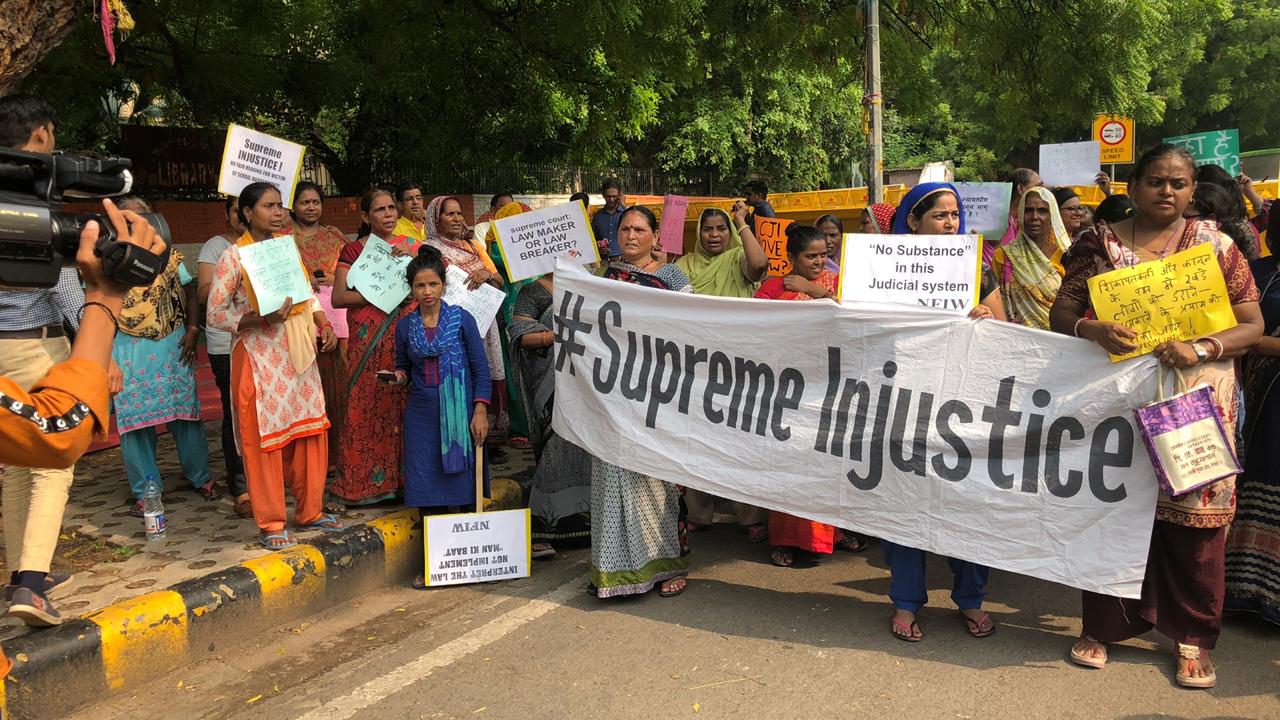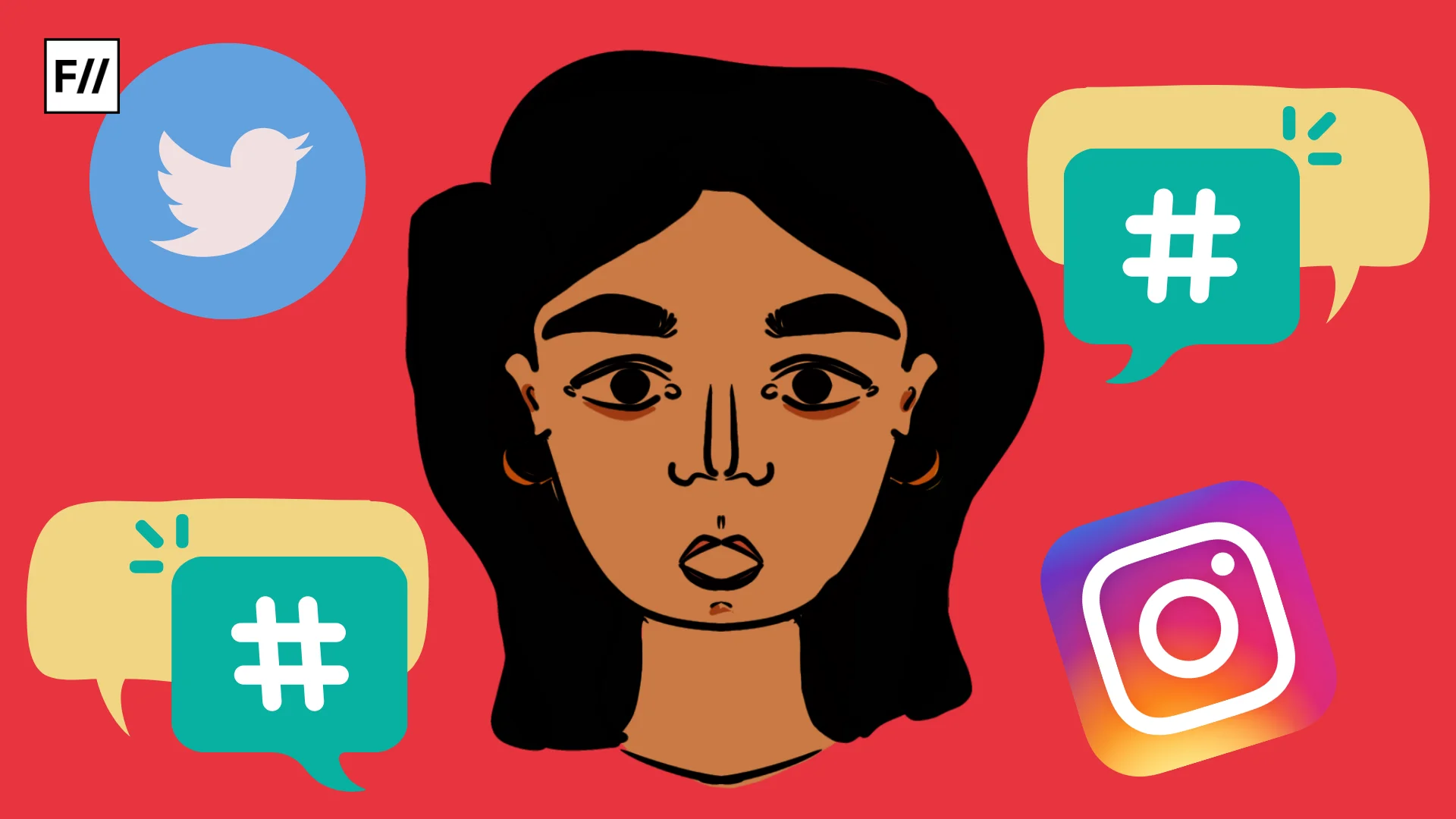In a protest organized at Jantar Mantar this Friday, a group of activists came together to protest the “clean chit” offered to the CJI Ranjan Gogoi for the allegation laid by his former employee.
India’s #MeToo movement brought into light the voices of women who were the subject of everyday humiliation and sexual harassment in their work-space. This unveiled the misuse of power by several ‘white collar’ authorities, who were otherwise never held accountable for their actions.

In April, a woman, who was a former employee in the Supreme Court filed a complaint against the CJI Rajan Gogoi for making unwanted sexual advances towards her. This was followed by firing her from her job for not reciprocating to his advances. However, CJI Ranjan Gogoi denied all the charges, claiming them as false and as an attempt to defamation.
As a part of the investigation process, the Chief Justice constituted a bench of himself and two other judges (Arun Mishra and Sanjiv Khanna JJ). But the judgement that was uploaded contained signature of only the two judges. His presence during the proceedings was left out in the judgement giving an impression of following the guidelines of legalities. The government’s top law officers (the Attorney General and the Solicitor General) were present in court. Through this bench, CJI Ranjan Gogoi erased himself from the allegations, pointing at the ‘criminal antecedents’ of the complainant.
Sexual harassment harvests a major power imbalance between the harasser and the victim. It is the duty of the lawmakers to ensure that incidents of sexual harassment be condemned.
This so called “opaque” investigation process was highly criticized by several judges and activists. This protest was hence a manifestation of the discomfort caused by the Indian Judiciary to its people.

Rakhi Sehgal, a trade unionist and labour researcher who was one of the speakers at the protest, said, “It has been 90 days and there has been no movement in this case. She has not been given reports and another committee has not been reinstated for investigating the matter further.”
This resonated with the article published by Gautam Bhatia in The Wire where he criticized the way the investigation has taken place leaving no room for reflexivity. He wrote, “The onus upon the committee was particularly strong to ensure that the unequal power relations that characterised this case were mitigated by a set of structures and procedures that were designed to level the playing field in substantive ways.” Rakhi elaborated this point by stating that, “the Vishaka guidelines through which the proceedings were to take place was not followed.”
Sexual harassment harvests a major power imbalance between the harasser and the victim. It is the duty of the lawmakers to ensure that incidents of sexual harassment be condemned. Vishaka guidelines were laid out to ensure the safety of women in the workspace. Vishaka guidelines was implement in the year 2013 as a means through which women could voice out their discomforts without being targeted to violence. But like Mithu said,
“There is a pattern that we are seeing in the treatment of women who voices their displeasure with the hegemony that instills fear in you. Aren’t we the largest democracy? Isn’t it our rights to fight against the injustice? By evading this crucial matter, what the lawmakers are subduing years of efforts we have taken to get to the point of free speech and democracy and it is very sickening to know the realities of the hypocritical people who unfortunately occupy the post of justice givers.”
Also read: #SupremeInjustice In Due Process: Why Can’t We Protest Against The CJI Gogoi Hearing?
The protest resonated with speech, sloganeering and beats of people, both men and women fighting for a cause in which they unanimously believed in. What was interesting about the protest was its participation, with people from different backgrounds. When asked to a middle-aged woman who works as a domestic helper in Delhi about her engagement in the protest, she said, “It is the cause for women and their protection. I work in a small space and I am prone to harassments too. We are all are united through violence and trauma. If something of this sort could happen to someone in such a good post, it could certainly happen with me too.”
This is one of the key reasons for the protest that took place. The evasiveness through which the proceedings took place clearly contradicts the nature of justice that is laid down by the constitution. The misuse of power by the Chief Justice sets an example of bad governance and dismissal of the right of speech. The important question to ponder upon is this: How would a woman voice out her opinion freely when it is constantly being curbed by the nature of power and law, very unlawfully?

The misuse of power by the Chief Justice sets an example of bad governance and dismissal of the right of speech.
A student from Kolkata who is now preparing for UPSC said, “It is very disappointing to see that most of the students preparing for civil services, especially men feel that the #MeToo campaign is an unnecessary outrage carried out by women. As a society, we need to be cognizant of the fact that it is the duty of us, on an individual level to constantly ensure that everybody gets an equal say in the way justice is being delivered.”
Also read: The Errors In The Due Process: Is CJI Gogoi Above The Law?
Equality has been a faint voice especially when concerned with womanhood. Shifting blames, character assassinations and other irrelevant made up things have always used as a weapon to misdirect the course of actions that is required from the legal system. This protest was organised to show solidarity against the misdirection that took place with the active involvement of the Chief Justice of India. This protest was also a way of shouting at the so called flagbearers of ‘justice’, that the fight for equality will thrive even amidst the storm of unfairness.
Featured Image Source: Divya Krishnamoorthy
About the author(s)
Divya Krishnamoorthy loves listening to stories and believes that we are all stories who stay alive only through narration. She is a Masters student in English at Ambedkar University, Delhi. When she is not writing her papers, you will definitely find her having one of her weird reveries.




